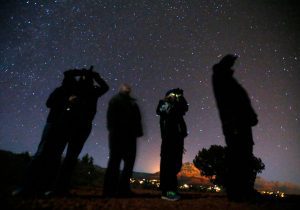Space photos for NASA: Rare photos of Neil Armstrong and Buzz Aldrin up for auction

Neil Armstrong on the moon next to American flag. The dog Laika sits in a space capsule, shortly before it becomes the first animal to orbit Earth. Buzz Aldrin takes a selfie, our planet has a blue curve behind it, in the first selfie ever produced in space.
Blue Marble was the first fully illuminated image of the Earth taken by a human being in 1972. credit: Harrison Schmidt / Christie’s
The original image collection spans a number of historic missions, from the Mercury and Gemini spaceflight programs to the Apollo missions on the moon. Some images are now iconic, like the “Blue Marble” image taken by the Apollo 17 crew – the first fully illuminated image of Earth taken by a human in space.
However, some of them were not released by NASA at the time they were taken, and are new to the general public.
The most expensive component Displayed is the only image Armstrong appears on the moon, taken by Aldrin during the Apollo 11 mission in 1969. It is estimated to be It is valued between £ 30,000 and £ 50,000 (roughly $ 37,800 to $ 63,000), according to the auction house.

The first self-portrait in space taken by Buzz Aldrin in 1966. credit: Buzz Aldrin / Christie’s
The press release said the images were taken while the photography was still analog, which required “light-sensitive chemicals, film and photographic papers.” The astronauts were instructed on how to take pictures In space by NASA, along with specialists such as Kodak and National Geographic.
The statement said: “Through their cameras, the astronauts who turned into artists were able to transfer the beauty and depth of their experience into space to humanity, and forever change the way we see ourselves and our place in the universe.”

Crescent Earth rising beyond the horizon of the barren moon, taken in 1971. credit: Alfred Worden / Christie’s
For decades, unreleased images have been kept in the Archives of the Manned Spacecraft Center in Houston, Texas, and can only be accessed by Accredited researchers. The items, collected over a 15-year period by private collector Victor Martin-Malboret, have been displayed in museums around the world including the Grand Palais in Paris and the Kunsthaus in Zurich.
“Astronauts are often portrayed as great scientists and heroes, but they are rarely welcomed as some of the most important photographers of all time,” Martin Malburet was quoted as saying in the statement.
“The early pioneers of Mercury and Gemini were given canvas space and Earth; Apollo astronauts, a strange world.”

First spacewalk in the United States, Eva Ed White over Texas, June 3-7, 1965. credit: James McDevitt / Christie’s
Top photo caption: The only photo of Neil Armstrong on the moon, taken in 1969.

Communicator. Reader. Hipster-friendly introvert. General zombie specialist. Tv trailblazer





